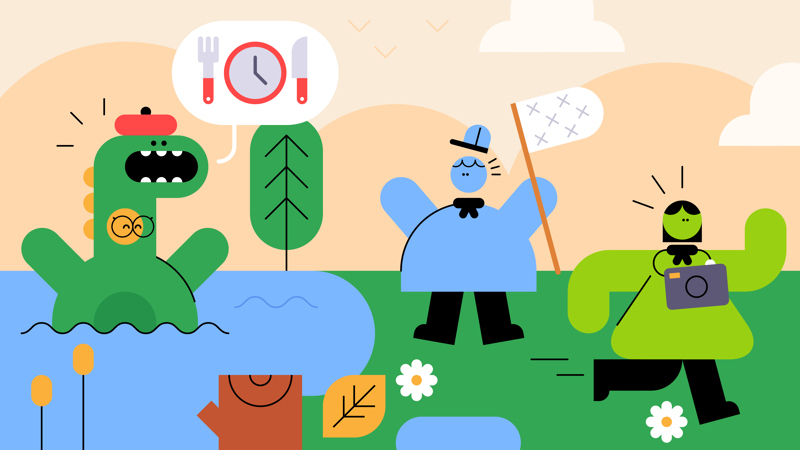
What’s the time Nessie?
You’ll need
- Scissors
- Sticky tack
Before you start
- Using sticky tack, put the attached 'Scottish Gaelic numbers' up on the wall in order so that everyone can see them.
- Cut out and stick the 'Time cards' up to one side.
Learn the numbers
- The person leading the game should introduce the numbers to everyone. Point to the number card on the wall and say each number first slowly, everyone should then repeat it back.
- The person leading the game should also introduce the two phrases: ‘Dè an Uair a Tha e, Niseag?’ and ‘Niseag uair’.
Play the game
- Choose one person to start as Nessie. Nessie should stand at end of the meeting place, facing away from the rest of the space.
- Everyone else is now a Nessie hunter. The Nessie hunters should line up on the other side of the meeting place, facing Nessie. Nessie should still have their back to the Nessie hunters, so everyone will be facing the same way.
- The Nessie hunters should call out ‘Dè an Uair a Tha e, Niseag?’
- Nessie should reply by saying a number between one and twelve in Scottish Gaelic.
- The Nessie hunters should repeat the number in Scottish Gaelic, say it in English, and move that number of steps towards Nessie.
- Everyone should repeat steps three to five until Nessie decides they’re hungry. Whenever they like, they can choose to say ‘Niseag uair!’ instead of a number.
- When Nessie says ‘Niseag uair!’, all of the Nessie hunters should run back to the start line as fast as they can. Nessie should chase the hunters and try to tag one of them.
- The Nessie hunter that Nessie tagged should choose a new person to be Nessie (they can choose themselves). Nessie should become a Nessie hunter.
- Play again until those that want to have had a turn at being Nessie.
Reflection
This game helped people to develop skills. Why is it helpful to know some words and phrases in different languages? People might say that if you go to that place (or meet someone from there), you can understand each other better. They may not speak English and even if they do, it’s polite to try to know a bit of their language too.
Safety
All activities must be safely managed. You must complete a thorough risk assessment and take appropriate steps to reduce risk. Use the safety checklist to help you plan and risk assess your activity. Always get approval for the activity, and have suitable supervision and an InTouch process.
- Scissors
Supervise young people appropriately when they’re using scissors. Store all sharp objects securely, out of the reach of young people.
- Active games
The game area should be free of hazards. Explain the rules of the game clearly and have a clear way to communicate that the game must stop when needed. Take a look at our guidance on running active games safely.
It’s up to you how long you leave the cards up. You could take some down as people get more confident.
If anyone can’t or doesn't want to speak, they could point to a number or hold up the number with their fingers or nominate a friend to call out for them, everyone else could still call out the number in Gaelic out loud together.
All Scout activities should be inclusive and accessible.
You could try playing this game again with a different language. You could also try learning the Scout Promise (or even the law) in Gaelic.


